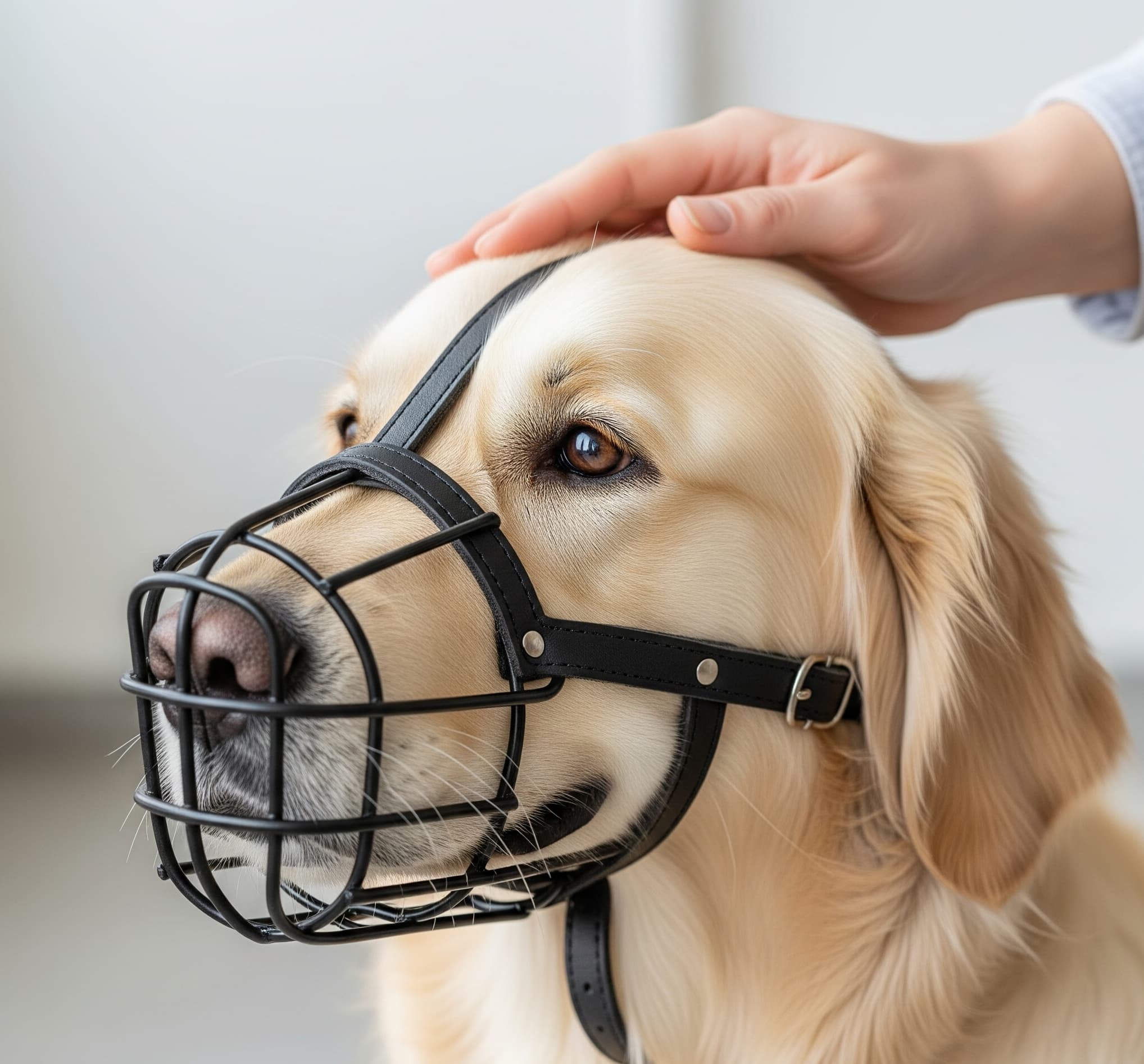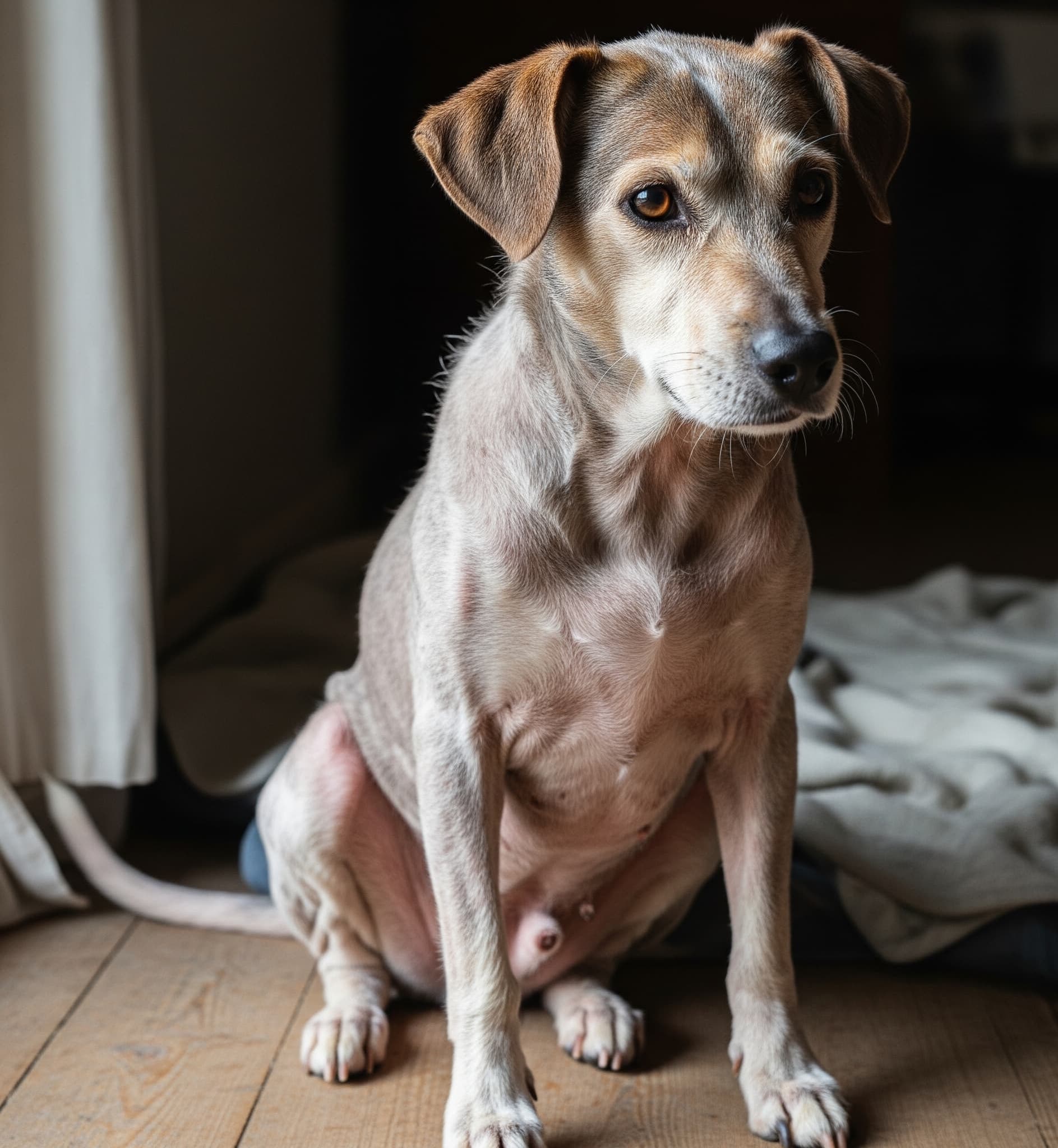Muzzle Dog Training: Best Use Cases & Safety Tips
Learn safe muzzle dog training methods, when to use muzzles, and expert safety tips. Complete guide for reactive dogs, vet visits, and proper training techniques.
Introduction
Many dog owners feel uncertain when they first hear about muzzle training. You might worry that using a muzzle seems harsh or that it will make your dog uncomfortable. The truth is that proper muzzle training can be one of the most helpful tools for keeping both dogs and people safe in specific situations.
Muzzle training is not about punishment. It is about preparation and safety. When done correctly, dogs can learn to wear muzzles comfortably and without stress. This training becomes essential for vet visits, grooming appointments, or helping reactive dogs feel more secure in challenging situations.
Table of Contents
To help you navigate this complete guide and find the information you need most, here are the key sections we will explore:
- When Muzzle Training Makes Sense for Your Dog
- Types of Dog Muzzles and Which One to Choose
- Step-by-Step Muzzle Training Process
- Safety Guidelines Every Owner Must Know
- Common Questions About Muzzle Training
When Muzzle Training Makes Sense for Your Dog
Not every dog needs muzzle training, but many situations make this skill valuable. Understanding when muzzles help creates better outcomes for both dogs and their families.
Veterinary and Medical Procedures
Most dogs need muzzles during certain vet visits. Even the friendliest dog might snap when scared or in pain. Vets often require muzzles for procedures like nail trims, wound cleaning, or examinations of sore areas. Dogs trained to wear muzzles beforehand experience much less stress during these visits.
Emergency situations also benefit from muzzle training. If your dog gets injured and needs immediate care, a muzzle keeps everyone safe while providing treatment. Injured dogs often bite out of fear and pain, even when they trust their owners completely.
Reactive Dog Management
Dogs with reactivity issues gain confidence through proper muzzle training. Some dogs react strongly to other dogs, strangers, or specific triggers. A muzzle provides extra safety while working on behavior modification training.
This tool allows reactive dogs to continue going on walks and experiencing the world. Without proper exercise and mental stimulation, reactive behaviors often get worse. Muzzle training gives these dogs freedom while keeping everyone protected.
Legal and Insurance Requirements
Certain dog breeds face restrictions in some areas. While breed-specific legislation is controversial, some locations require muzzles for specific breeds in public spaces. Property insurance companies sometimes mandate muzzle training for certain breeds as well.
Travel situations may also require muzzles. Airlines, trains, and some hotels have policies requiring muzzles for dogs above certain sizes. Training your dog beforehand makes these experiences much smoother.
Types of Dog Muzzles and Which One to Choose
Choosing the right muzzle makes training easier and keeps your dog comfortable. Different muzzle types work better for different situations and training goals.
Basket Muzzles for Training Success
Basket muzzles offer the best option for most training situations. These muzzles allow dogs to pant, drink water, and receive small treats. The open design prevents overheating while maintaining safety.
Quality basket muzzles use materials like plastic, leather, or metal wire. Plastic versions work well for most dogs and cost less than other options. Leather muzzles last longer but need more maintenance. Wire basket muzzles provide maximum airflow but may feel heavier.
Proper fit is crucial for basket muzzles. The muzzle should allow your dog to open their mouth slightly and pant normally. There should be about half an inch of space between the end of the nose and the front of the muzzle.
Fabric Muzzles for Short-Term Use
Fabric or grooming muzzles work only for very brief periods. These muzzles wrap around the snout and prevent panting. Never use fabric muzzles for training sessions or extended wear.
Vets sometimes use fabric muzzles for quick procedures lasting just a few minutes. Even then, careful monitoring prevents overheating. These muzzles should never be your first choice for muzzle training.
Custom vs. Standard Sizing
Most dogs fit standard muzzle sizes with proper measuring. Measure your dog’s snout length and circumference to find the right size. Add extra space for comfort and panting room.
Dogs with unusual face shapes might need custom muzzles. Flat-faced breeds, very long snouts, or dogs with specific medical conditions sometimes require special fitting. Professional dog trainers can help determine if custom options are necessary.
Step-by-Step Muzzle Training Process
Successful muzzle training takes patience and positive associations. Rushing this process creates negative experiences that make future muzzle use much harder.
Phase One: Introduction and Positive Association
Start by letting your dog see and smell the muzzle without any pressure to wear it. Place the muzzle on the ground near your dog’s food bowl during meals. This creates positive associations between the muzzle and good things.
Hold the muzzle in your hands and give your dog treats when they show interest in it. Let them sniff and investigate the muzzle freely. Praise calm, curious behavior around the muzzle.
Practice holding the muzzle near your dog’s face without putting it on. Reward them for staying calm and not pulling away. This step might take several days or weeks depending on your dog’s comfort level.
Phase Two: Short Wearing Sessions
Once your dog feels comfortable around the muzzle, begin very short wearing sessions. Put the muzzle on for just a few seconds while giving treats and praise. Remove it before your dog shows any stress signs.
Gradually increase wearing time as your dog stays relaxed. Work up to 30 seconds, then one minute, then longer periods. Always remove the muzzle while your dog still feels comfortable.
Practice putting the muzzle on and taking it off repeatedly during each session. This helps your dog understand that wearing the muzzle is temporary and safe.
Phase Three: Adding Movement and Distractions
Start walking around the house while your dog wears the muzzle for short periods. Begin in quiet areas and gradually add more distractions. Practice in the backyard before attempting public spaces.
Bring the muzzle on car rides without putting it on your dog. Let them see it and get treats nearby. Eventually, practice putting it on briefly during car trips.
Schedule practice sessions before fun activities like walks or playtime. This reinforces that wearing a muzzle leads to enjoyable experiences rather than punishment.
Safety Guidelines Every Owner Must Know
Muzzle safety protects both dogs and people when used correctly. Following proper guidelines prevents accidents and ensures positive training experiences.
Time Limits and Supervision
Never leave a muzzled dog unattended, even for short periods. Dogs wearing muzzles cannot defend themselves normally if they encounter threats or dangerous situations.
Limit muzzle wearing time based on weather and activity level. In hot weather, reduce wearing time significantly. Dogs wearing muzzles overheat more quickly than unmuzzled dogs.
Most dogs should not wear muzzles for more than 60 minutes at a time. Active dogs or warm weather requires even shorter sessions. Always prioritize your dog’s comfort and safety over convenience.
Proper Fit and Comfort Checks
Check muzzle fit regularly as dogs can lose or gain weight. A muzzle that fit properly six months ago might be too tight or loose now. Proper fit allows panting and slight mouth opening.
Look for rub marks or sore spots after each muzzle session. Red marks, hair loss, or sensitive areas indicate fit problems. Adjust or replace muzzles that cause any discomfort.
Clean muzzles regularly to prevent bacteria buildup and odors. Dirty muzzles can cause skin irritation and make dogs reluctant to wear them.
Reading Your Dog’s Stress Signals
Learn to recognize when your dog feels stressed while wearing a muzzle. Heavy panting, drooling, trying to paw off the muzzle, or freezing in place all indicate discomfort.
Remove the muzzle immediately if your dog shows stress signs. Return to earlier training steps and progress more slowly. Pushing through stress creates negative associations that make future training harder.
Watch for positive signs that indicate your dog accepts the muzzle. Relaxed body language, normal walking pace, and willingness to take treats show successful training progress.
Common Questions About Muzzle Training
Will my dog hate me if I use a muzzle?
Dogs trained properly with positive methods do not develop negative feelings toward their owners. The key is making muzzle wearing a positive experience through treats, praise, and patience. Many dogs learn to enjoy muzzle time because it predicts fun activities like walks.
How long does muzzle training take?
Training timeline varies greatly between individual dogs. Some dogs accept muzzles within a few days, while others need several weeks or months. Fearful or anxious dogs typically need more time. Consistent, positive training sessions work better than rushing the process.
Can my dog drink water while wearing a muzzle?
Properly fitted basket muzzles allow dogs to drink water and receive small treats. Fabric muzzles prevent drinking and should only be used for very brief periods. Always ensure your dog can access water when wearing a muzzle for extended times.
Are certain breeds harder to muzzle train?
Flat-faced breeds like bulldogs and pugs may need special muzzle types due to their facial structure. High-energy breeds might find it harder to stay still during initial training. However, any dog can learn to accept a muzzle with proper training methods.
Should I use a muzzle to stop unwanted behaviors?
Muzzles should never be used as punishment for behaviors like excessive barking or chewing. These tools are for safety during specific situations, not for general behavior management. Address unwanted behaviors through proper training and environmental management instead.
Conclusion
Muzzle training provides safety and peace of mind for many dog owners and their pets. When done correctly with patience and positive methods, dogs learn to wear muzzles comfortably without stress or fear.
Remember that muzzle training is about preparation for specific situations, not daily wear. Focus on creating positive associations and never rush the training process. Your dog’s comfort and safety should always come first.
The time invested in proper muzzle training pays off when you need this tool for vet visits, emergencies, or helping reactive dogs navigate challenging situations. Both you and your dog will feel more confident knowing this skill is ready when needed.
Ready to start muzzle training with your dog? Begin with the introduction phase today and take your time building positive associations. Share your muzzle training experiences in the comments below – your story might help other dog owners succeed with their training goals!




Post Comment